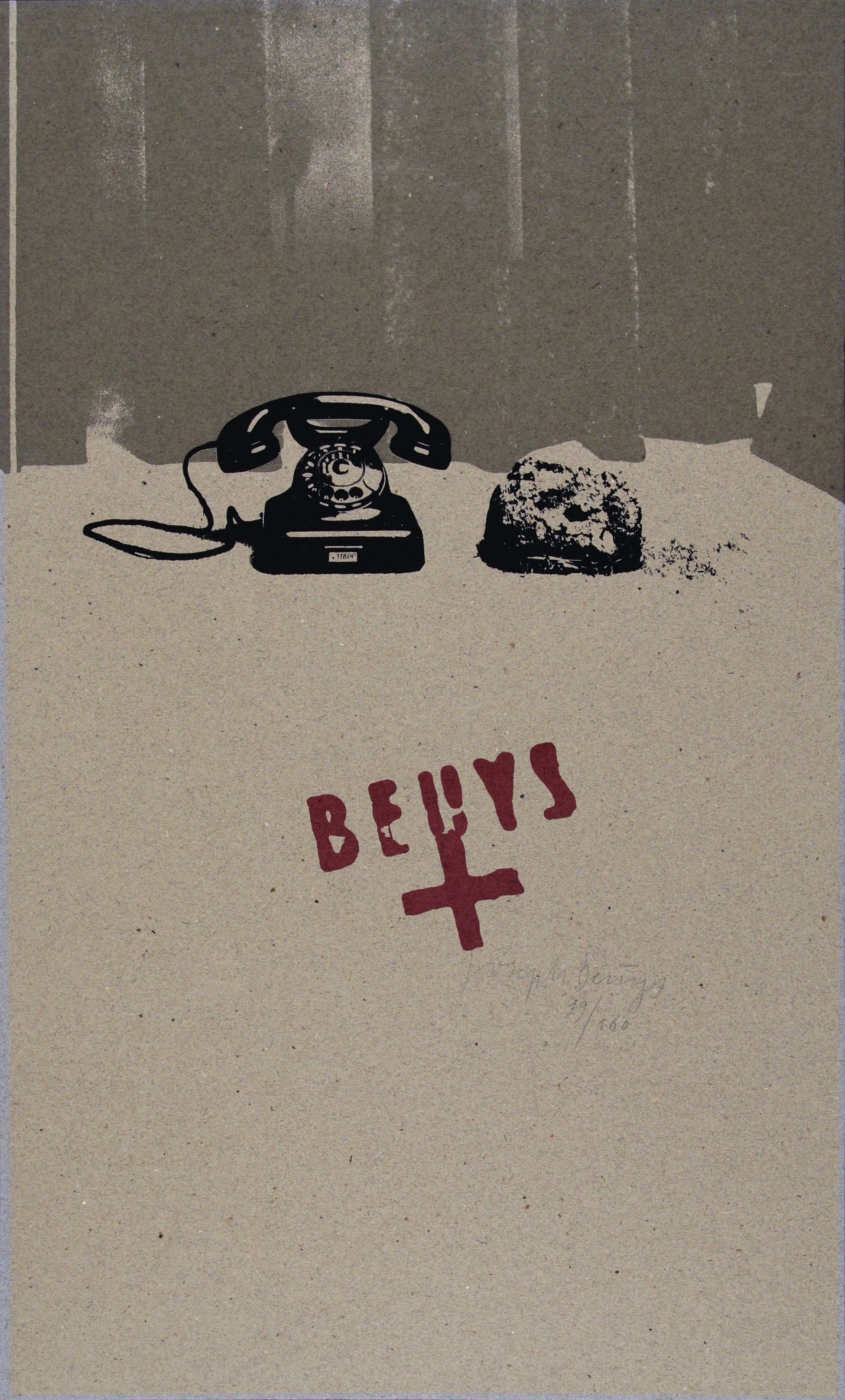Screenprint on felt cardboard
Transformation of a photo of the object Erdtelephon (1969) in front of felt brackets in the Collection Ströher, Darmstadt
Dimensions: 99 x 60 cm
Signature, inscriptions, markings: signed and dated at lower middle
Copy Number: 99/100
Publisher: Edition Schellmann und Klüser, Munich
Accession Number: 1001114
Works by Joseph Beuys not infrequently appear confusing, enigmatic, chaotic. Even the depiction of an everyday object, a telephone, in conjunction with a lump of earth of the same volume against a brown-gray background provokes questions. The artist himself considers this to be a basis for understanding his art and the hoped-for consequences: "In the present, man tends to satisfy only his intellect and to understand everything from the laws of logic. (...) I was interested in the fact that all residues existing in the subconscious are broken up and set into turbulence in the form of a chaotic solving process, because the beginning of the new always takes place in chaos "1.
As a radical environmental activist (in 1979 he is involved in the founding of the "Green Party"), Beuys, by combining two seemingly contrary elements, challenges the viewer to a renewal of seeing and thinking, to a new willingness to listen to nature through the means provided by our minds. Man is called upon by the earth telephone2 to listen into the earth as if with "feelers".
The technical equipment of modern man - here represented by the telephone and its lifeless coldness - confronts Beuys with a soft, organic-warm lump of earth. An eyewitness to the action, in the wake of which this graphic work was created, reports: "I stood in front of it and gradually perceived what lay there at my feet. A lump of clay, formed by human hands, and a device from the factory, nature and technology, a simple and a complex structure; one radiating warmth, the other cold, one alive, the other dead. The dead device is there to connect. Isn't the lump of earth, with the bottom swept to the top, also? Is it not a sign that it is necessary to establish a connection with the earth?"3 Human perception is thus to be directed back to the sensuality of nature. Beuys: "It all depends on the warmth in thinking."4
With the help of modern technology, humanity seems to have emancipated itself from nature to a large extent, but without sufficiently considering the preservation of its material foundations. It sees technology not as an aid, but as the center of life. Joseph Beuys wants to inspire them to think and act in a new way. With what he already knows, the viewer usually cannot understand his art, but he can use it as an offer to further develop his perception and consciousness. Due to the alienation of the mind from nature, people have lost the ability to see themselves in its light. They should bring nature and technology into harmony and find their way back to a life that respects the given raw materials.
Melanie Bollmann
1 Götz Adriani et al, Joseph Beuys - Leben und Werk, Cologne 1981, p. 84.
2 Joseph Beuys, Multiplied Art. List of works, ed. by Jörg Schellmann and Bernd Klüser, Munich (4th edition) 1977, no. 90.
3 Helmut Leppien, Joseph Beuys in der Hamburger Kunsthalle, Hamburg 1991, p. 28.
4 Joseph Beuys (1982), quoted from: Johannes Stüttgen, Zeitstau. Im Kraftfeld des erweiterten Kunstbegriffs von Joseph Beuys. 7 lectures in the year of Joseph Beuys' death, Stuttgart 1998, p. 163.
